The Covid Diaries 15: Florence Nightingale Museum incl. Nightingale in 200 Objects, People & Places
A review of the Florence Nightingale Museum and its temporary exhibition. In which I began to realise that maybe I don’t need to rush out to every museum that reopens. But I still learned some things I didn’t know before and was glad to see a museum that has fought off closure for now.
Can it be Museum Fatigue Already? …
Is it possible I’m already suffering from a bit of museum fatigue? It’s only been a matter of weeks since museums began reopening and I began to visit them! I felt a little conflicted during this visit between rushing out to see them all and give them much-needed support, and taking my time a little more to space out my trips. What is hard for me to determine at the moment is whether this is because I need to reign myself back in a bit and go to fewer things, or whether I need to have a clearer purpose in visiting whichever institutions I choose to go to.
… Or is it the Object-Led Design Distracting My Brain?
I first visited the Florence Nightingale Museum about ten years ago. From memory the Museum still has the same basic set up and exhibition design. Certainly the style gave me a very strong sense of nostalgia for my museum studies programme circa 12 years ago; I found echoes of that period of museum design in the limited traditional object cases, omnipresent glass, and strong colours. It is very decentralised and object-led; rather than an authoritative museum ‘voice’ which does not acknowledge its own biases and selective narrative, information is more neutral. This allows you to choose what to focus on and how to interpret it. I mean to a certain extent – there are still strong central messages here, like the importance of Nightingale’s legacy on the professionalisation of nursing as an occupation.
It’s a similar design philosophy to the Foundling Museum which I recently visited. I think it was my state of mind, but in this case I found it just a little distracting. There was so much information in the form of peephole snippets, object captions, video interviews and sound recordings; I couldn’t focus on what to take in and instead found myself flitting from section to section. Maybe that’s ok though – if there’s no official narrative then flitting about is my choice! And maybe, as I say, it’s a bit of museum fatigue setting in on my part.
The Florence Nightingale Museum: a Historic Collection for a Historic Woman
I did learn quite a lot in any case. The Museum is on the grounds of St. Thomas’ Hospital, and the core of the collection was acquired by the Hospital’s matron from 1913-1937, Dame Alicia Lloyd-Still. The permanent exhibition is broken up into three sections: early life; Crimean War and development of Nightingale’s theories and methods; and later life and legacy.
Each of these sections is housed in a more or less circular structure within a large rectangular room. The structures differentiate clearly between each theme but also makes for a slightly odd use of space. The Museum cheerfully overcomes this by filling the space with things like object handling trays in expectation of less socially-distanced times. Around the outside of the circular structure are images and videoed interviews representing more modern nursing and nurses. Currently, the museum is also staging a temporary exhibition, Nightingale in 200 Objects, People & Places. This is contained in the final two sections (rooms?) at the rear of the museum space.
Florence’s Life and Personality
In terms of what I learned, there was quite a bit about Florence’s early life. The key points I retained were how stifled she felt by her middle-class upbringing; how unusual it was for a woman of her background to go into nursing; and the fact that she was educated in Germany. There was also, of course, a lot about how she came to have the prominence she did through her role at Scutari Hospital in modern Istanbul during the Crimean War. I read about the military discipline among her well-recruited nurses, and care for the patients as individuals. The bits about identifying vectors of disease and infection I already had some knowledge of.
I got a good sense of her personality from the information and stories that are shared. Basically, she was quite grumpy through the middle of her life and only chilled out as an old lady. The level of information does risk being overwhelming if you don’t have a plan of attack. Each section has different layers of detail, like high level introductory panels; object labels; ‘optional extras’ like pull-out drawers; or little peepholes which have an image or video with a line of accompanying explanation. Perhaps the key is that one needs to go into the museum in a primed and curious mood. Or conversely that one should dip in and out a few times and build up a picture over time.
‘Florence’ Helps Visitors Navigate Covid Measures
Now, you may be thinking “Florence Nightingale, she was all about preventing disease – I’m sure the Museum is doing a great job with Covid measures!”. And you would be right! There was even a ‘Florence’ in costume and period character to welcome us, and explain the safety measures. They were more comprehensive and more ‘hospital-like’ than most museums I’ve been to so far. There were medical-grade wipes everywhere for example, with instructions to wipe any multi-media we used (touchscreens or headphones) both before and after use. The Museum has reduced hours and is selling fewer tickets than usual. So overall it is (appropriately) a very safe environment for learning about a key figure in modern disease prevention.
Nightingale in 200 Objects, People & Places
This temporary exhibition celebrates the bicentenary of Nightingale’s birth. It is interesting for its mix of objects and concepts in making up the 200 exhibits. Included are a lamp Florence carried, a Barbie, several books about the lady herself or following in her footsteps, and personal and family mementos. As the title indicates, there are also connections with people (eg. Gandhi) and places. Visitors are encouraged to participate by submitting ideas for a 200th exhibit yet to be chosen. It is small but quite a nice way to finish the exhibition as it encapsulates what the permanent collection also tries to achieve: a sense of the person, her ideas and her legacy.
Hopefully as more visitors come back to London, some of them will be tempted once more to stop in and learn about Florence Nightingale. For Londoners who want to support struggling museums it is also a good place to visit. Just ensure you go in a curious mood, ready to learn and absorb!
On its own merits: 3/5
Implementing Covid rules: 5/5
Nightingale in 200 Objects, People & Places until 7 March 2021
If you see this after your page is loaded completely, leafletJS files are missing.

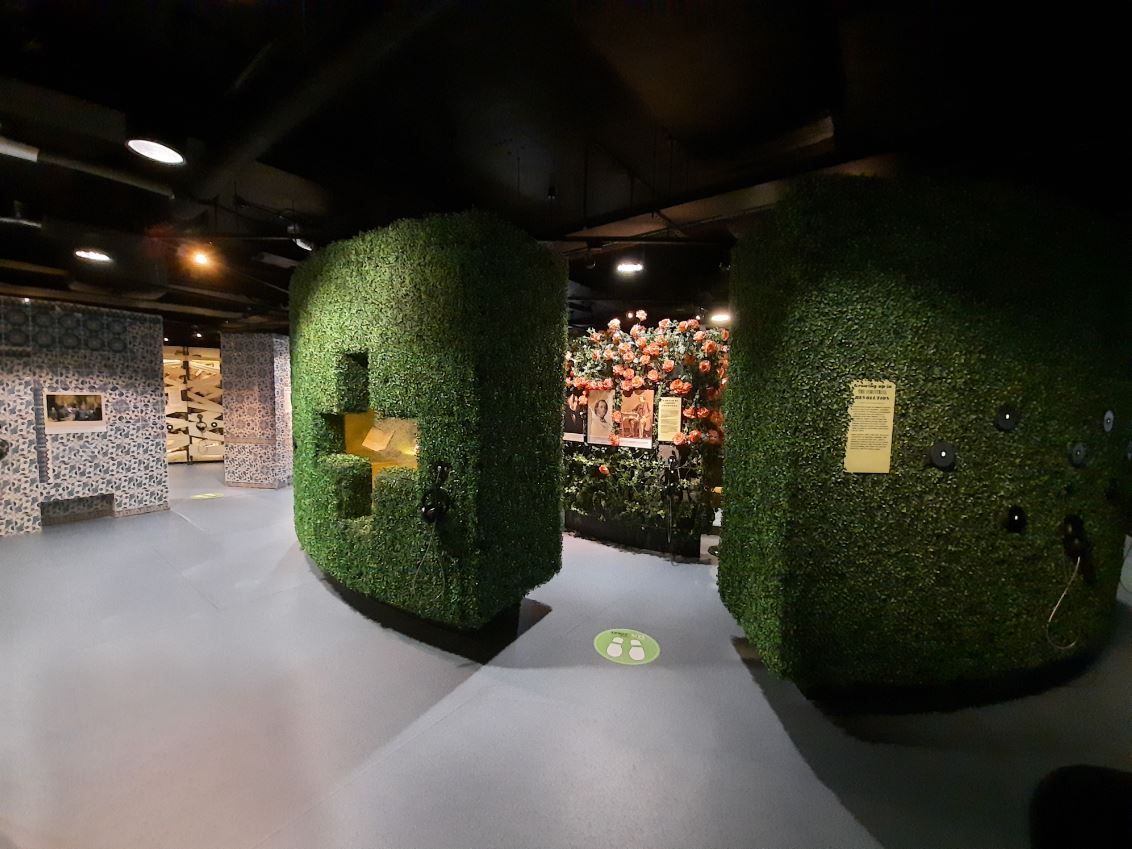
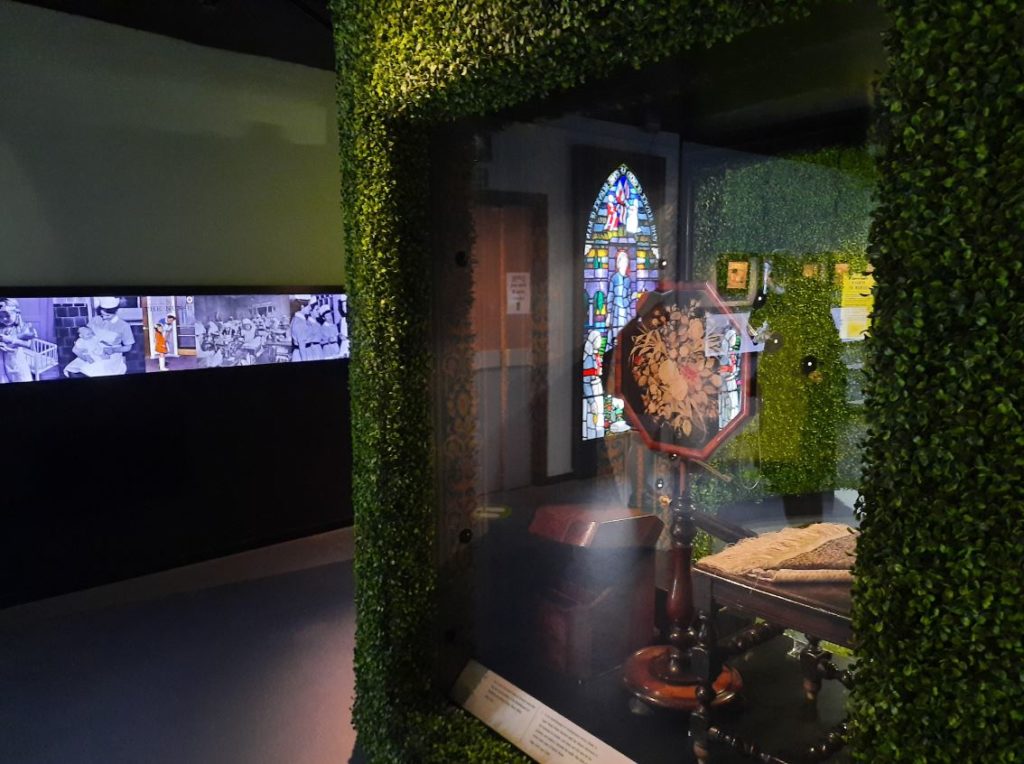
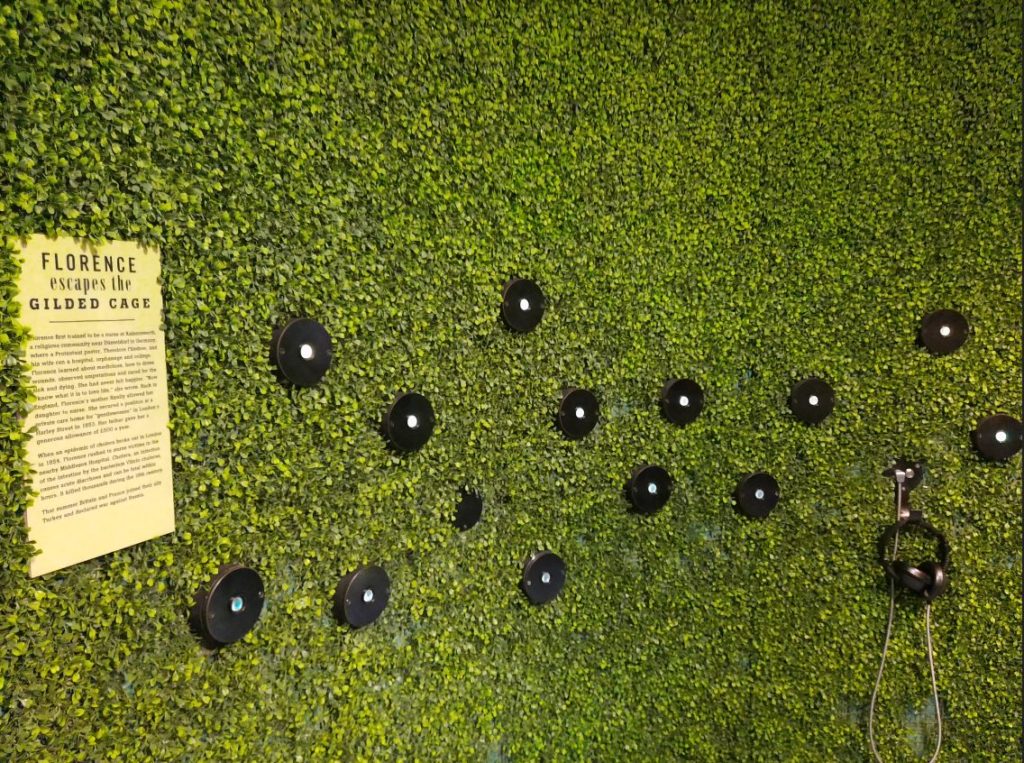
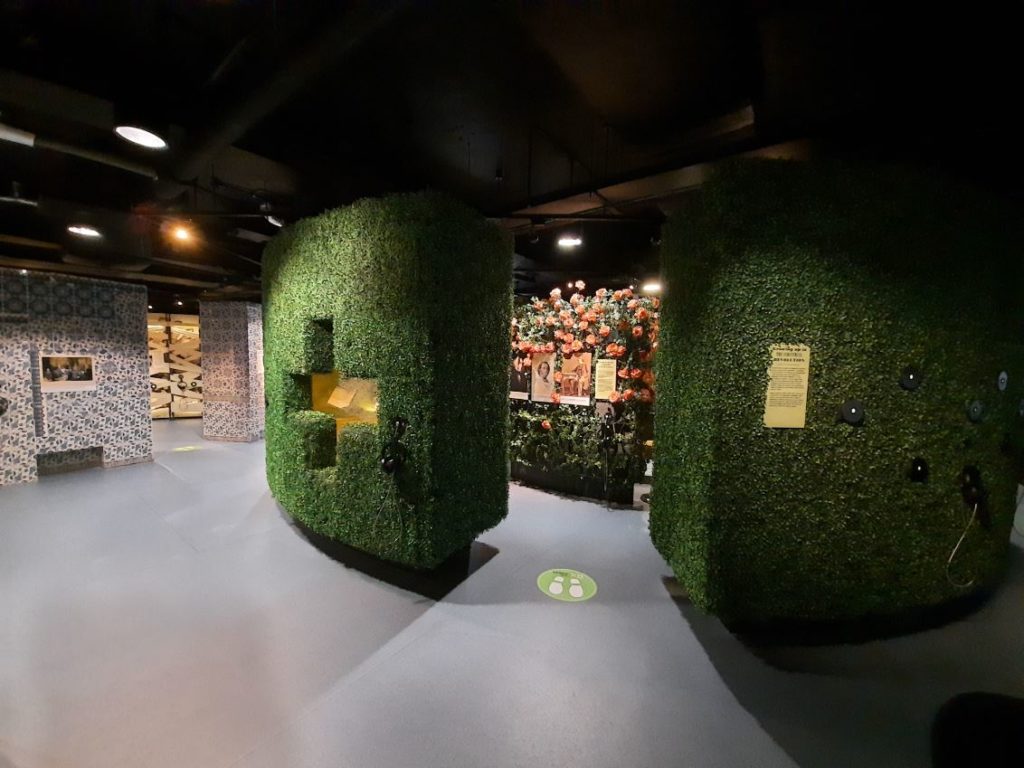
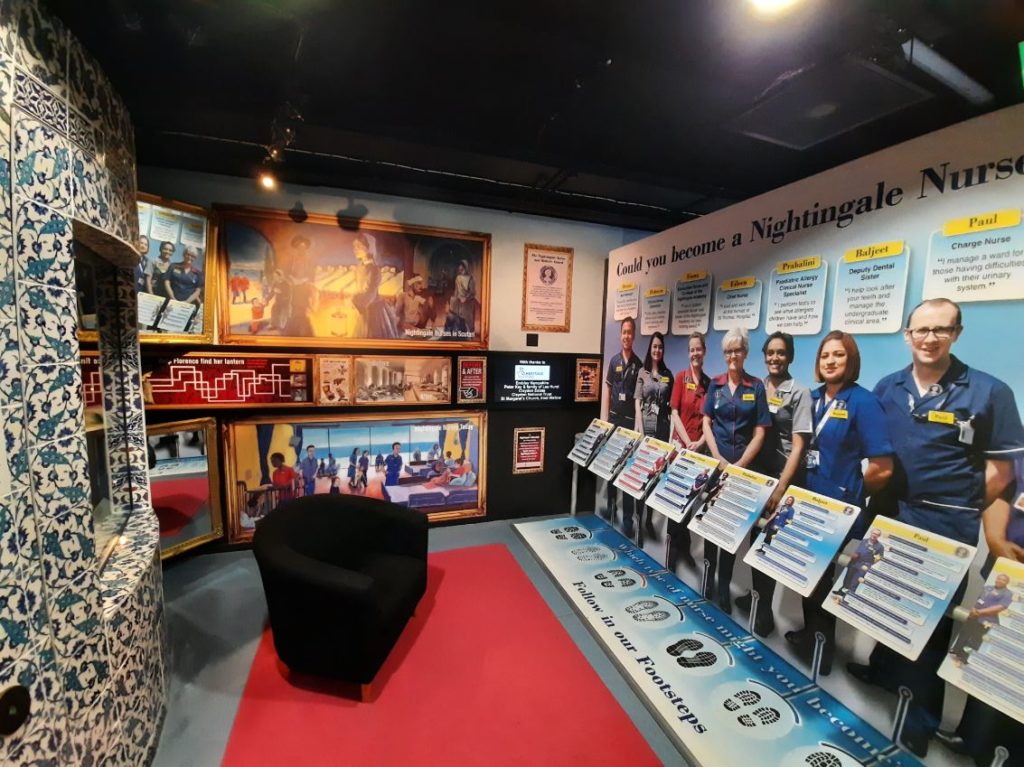
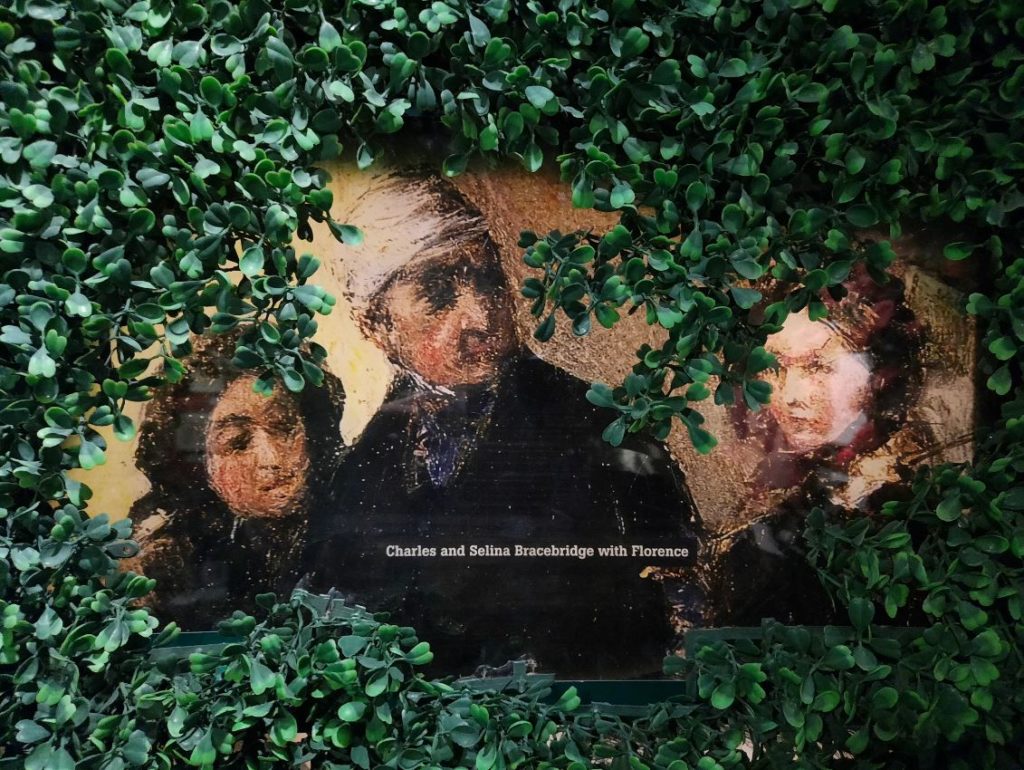
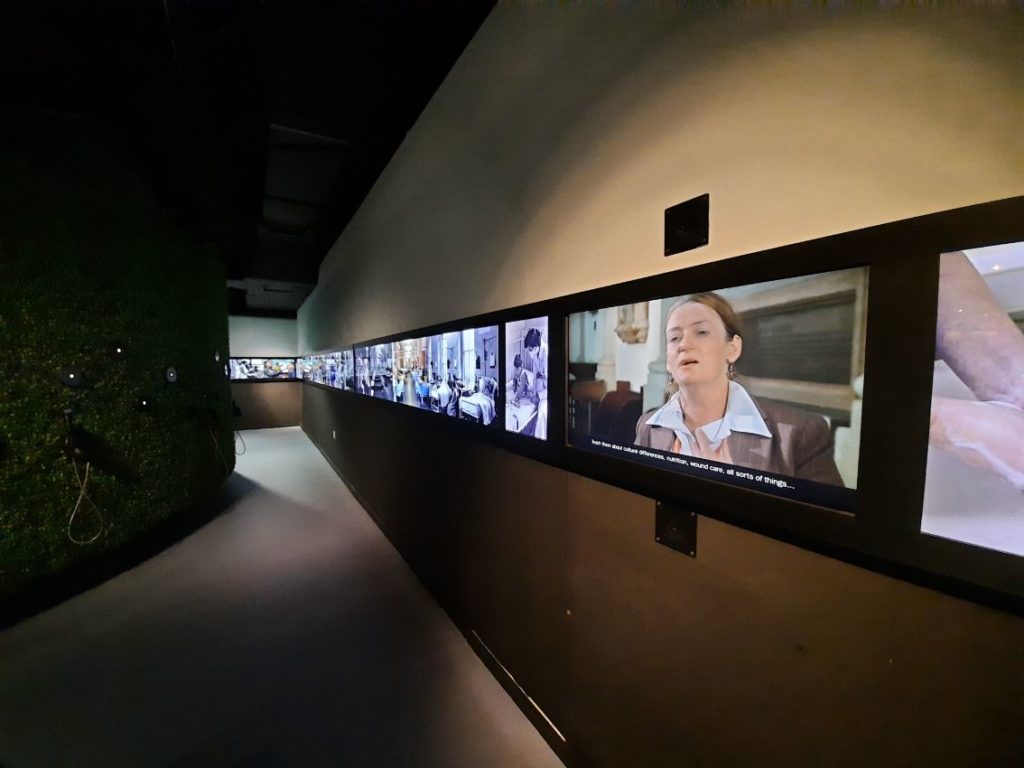
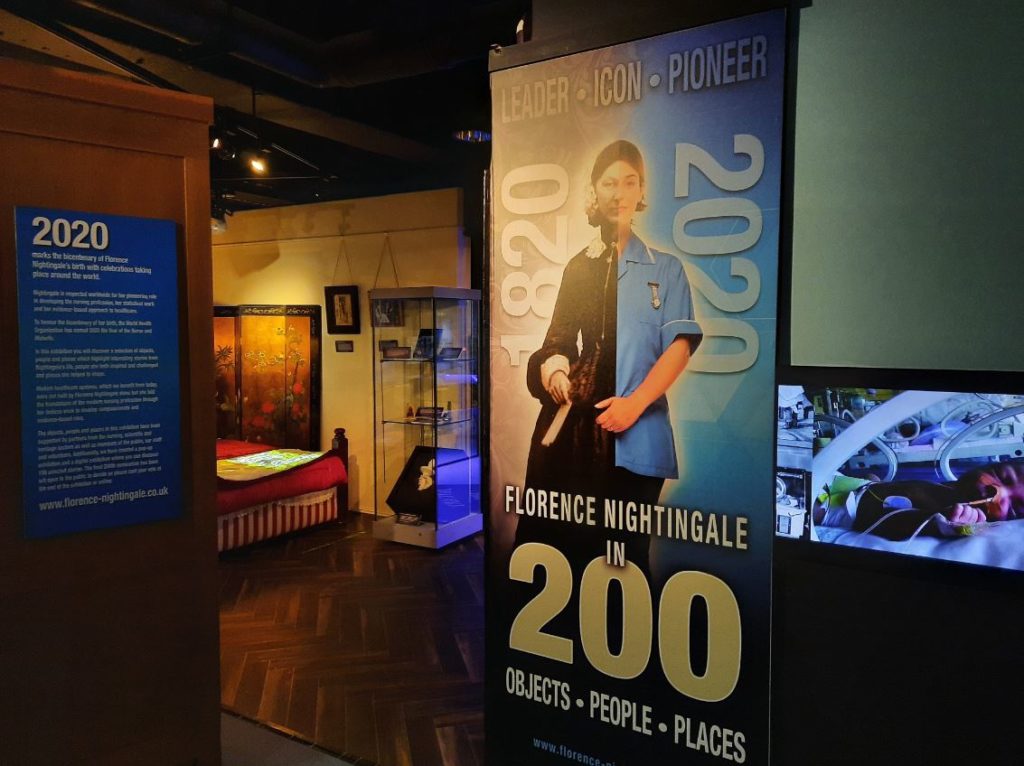
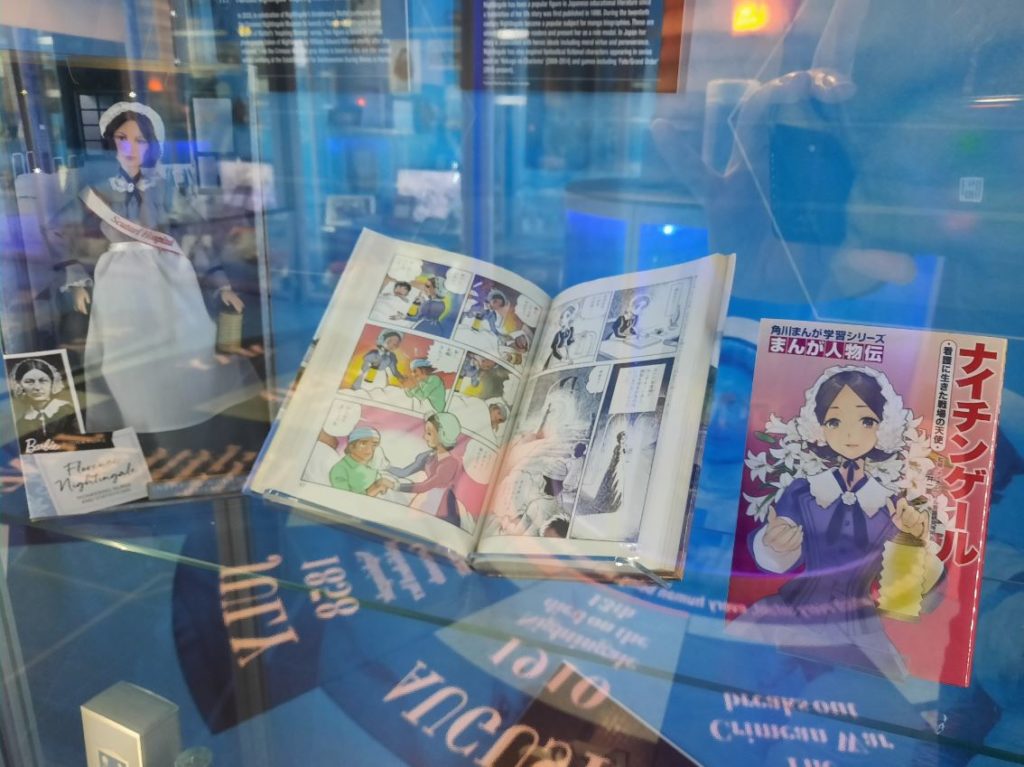
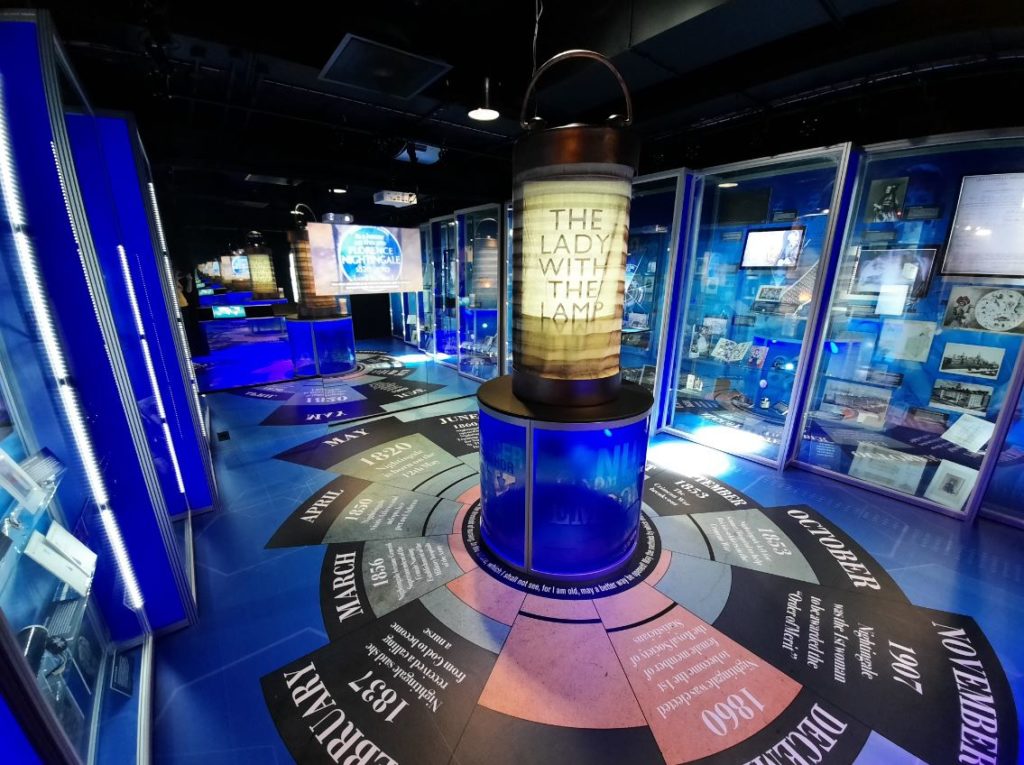

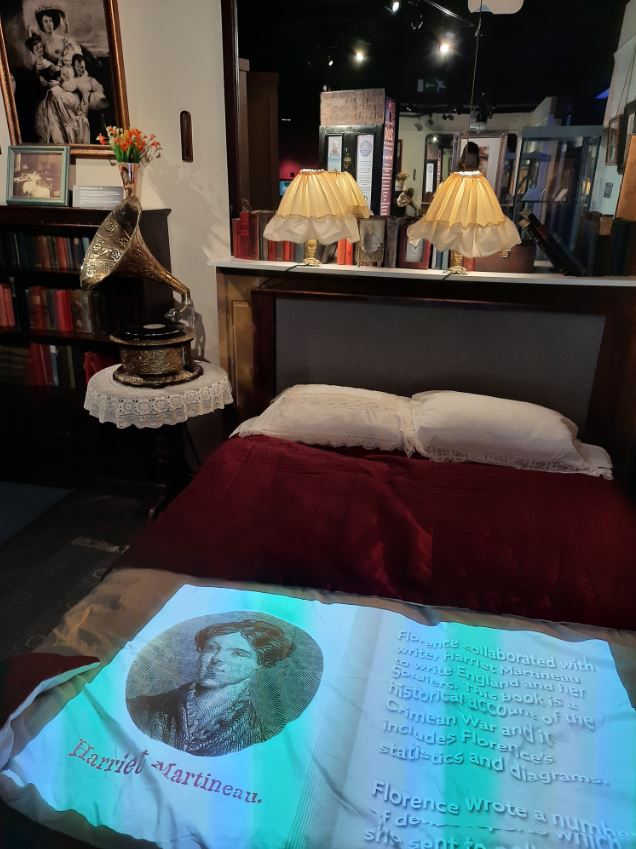
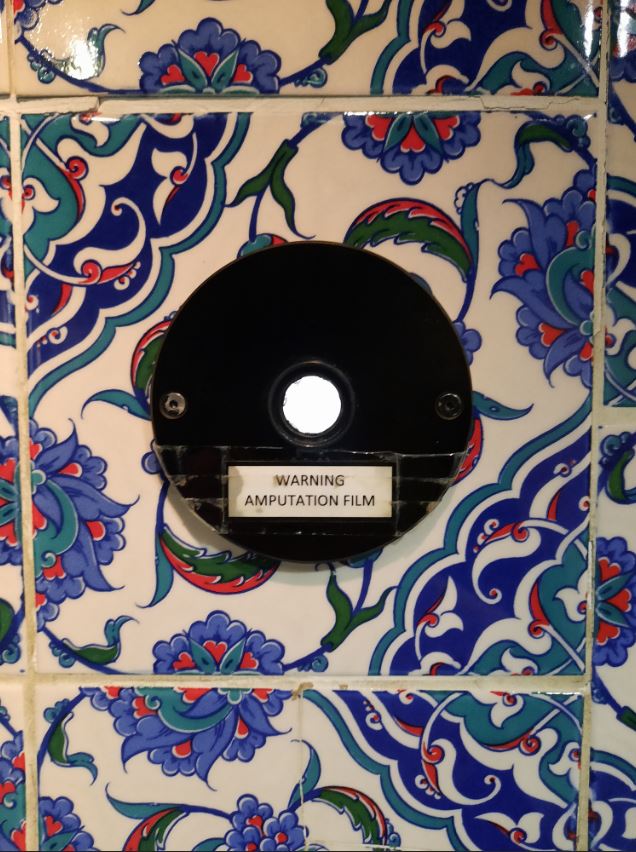
One thought on “The Covid Diaries 15: Florence Nightingale Museum incl. Nightingale in 200 Objects, People & Places”